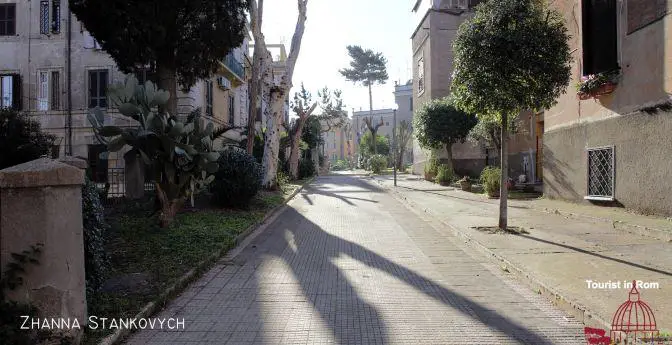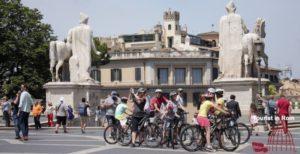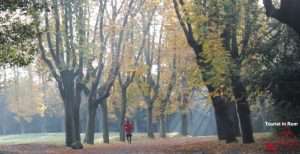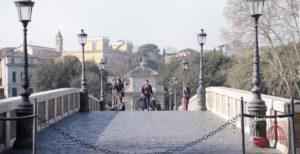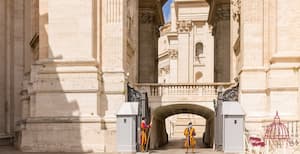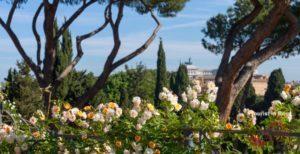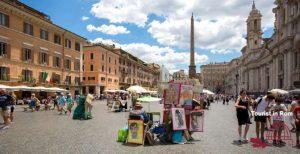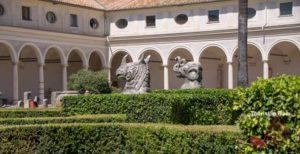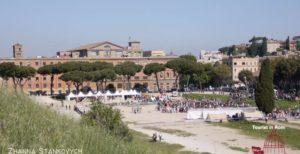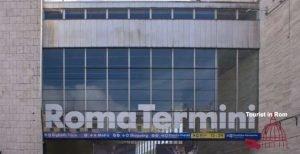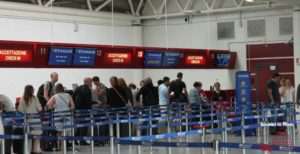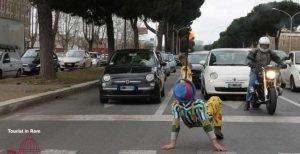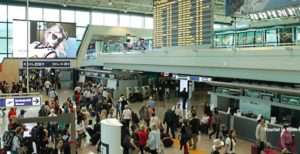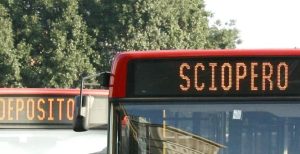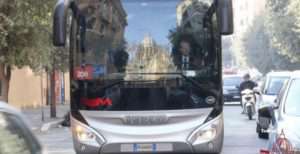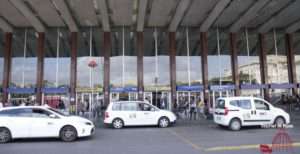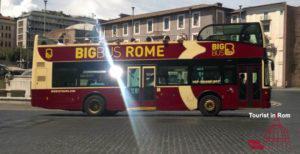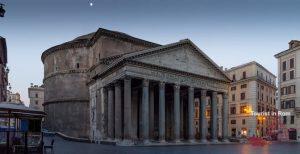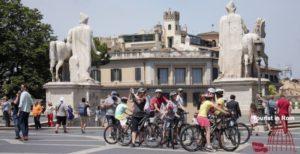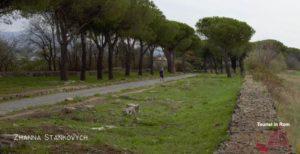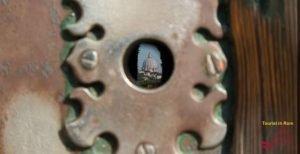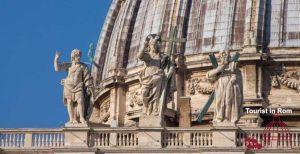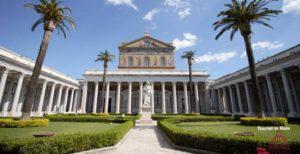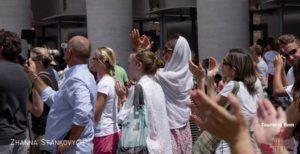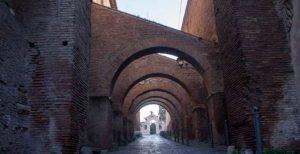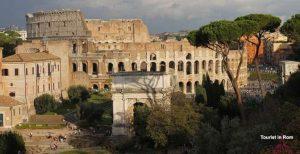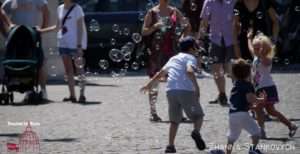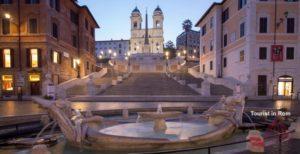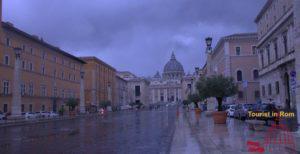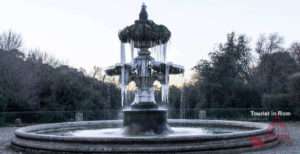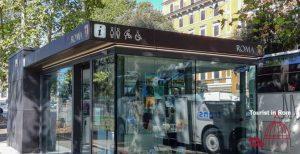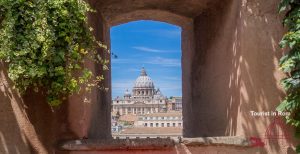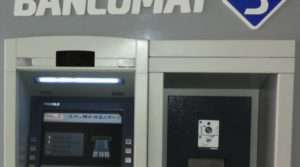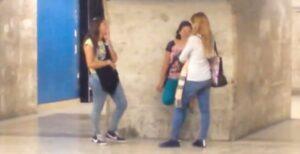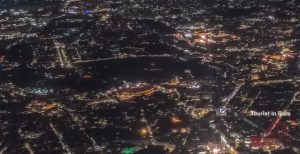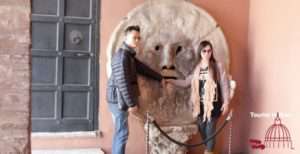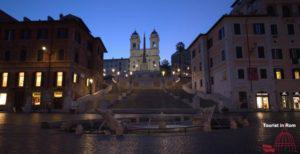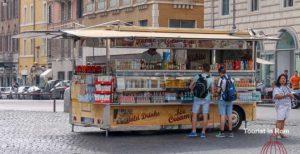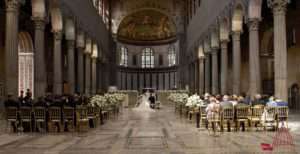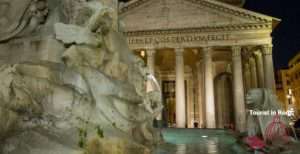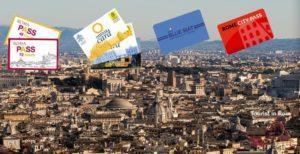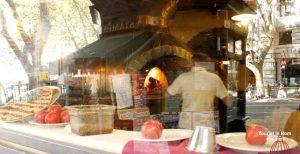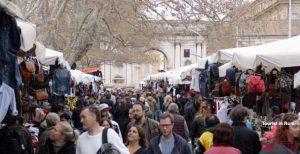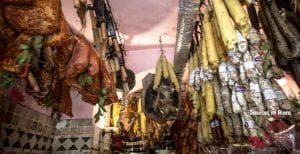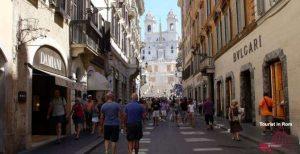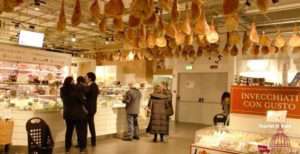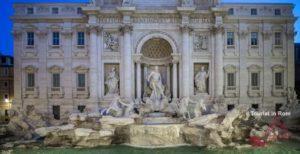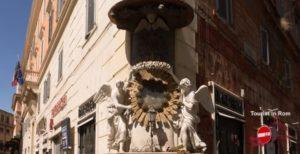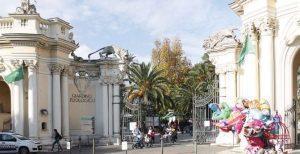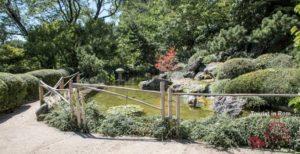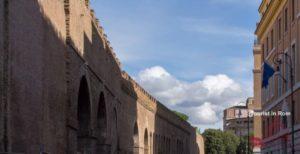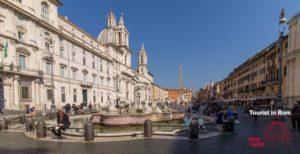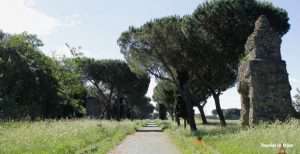The seven churches pilgrimage in Rome has a long tradition. Which pilgrimage churches belong to it and how you can best get there, you can find out here.
The Seven Churches Pilgrimage is a dictum in Rome. “Making the round of the seven churches” means for the Romans that something is complicated and takes a long time.
History of the seven churches pilgrimage
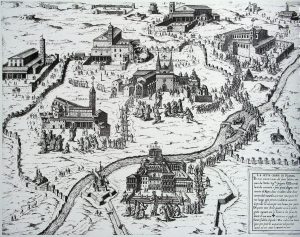
[Public domain] via Wikimedia Commons
The tradition of the seven churches pilgrimage – pellegrinaggio delle sette chiese – began with father Filippo Neri from Florence in the year 1551. He organized on holidays walks outside the city walls with church attendance and picnic.
Later it became a 15 miles pilgrimage walk.
In Rome, the Major Basilicas are four and they are part of the Seven Churches Pilgrimage:
St. Peter, St. Paul outside the walls, St. John and Santa Maria Maggiore (great St. Mary’s Church).
The other three churches are San Sebastiano (St. Sebastian) with the catacombs on the via Appia Antica, Santa Croce in Gerusalemme (Holy Cross in Jerusalem) and San Lorenzo (Saint Lawrence) at the monumental graveyard Verano.
How to get to the seven churches
All sightseeing tours Hop on hop off stop in the vicinity of St. Peter’s Basilica and the Basilica of Santa Maria Maggiore.
You get to St. Paul outside the walls with the Metro line B.
To San Sebastiano on the Via Appia Antica at the catacombs you can take the busses 118 or 218 or the violet hop on hop off line of BigBus.
San Giovanni you can reach with the metro line A or with tram line 3.
Santa Croce in Gerusalemme, San Lorenzo and the monumental cemetery Verano you can reach with the tram lines 3 and 19.
Route of the seven churches pilgrimage
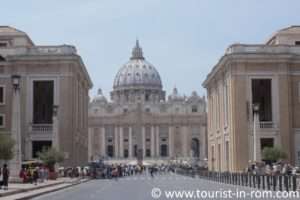
The seven churches pilgrimage has the following order:
From the city center to Saint Peter.
From Saint Peter to Saint Paul outside the walls. You can take bus line 23, which connects St. Peter and St. Paul.
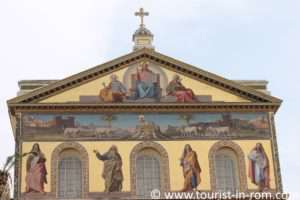
From Saint Paul the best is to walk over along the street called Via delle Sette Chiese (street of the seven churches) which leads to San Sebastiano at the catacombs in the Regional Park of the Appia Antica.
We’ve described this piece in the Hike from St. Paul to the catacombs.
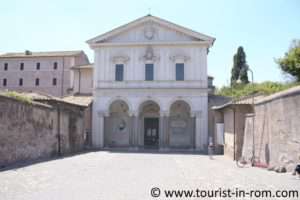
The next stop after San Sebastiano is the Pontifical Basilica of San Giovanni. There is the bus number 218 which stops on Via Ardeatina or at the park office on Via Appia Antica. This bus goes directly to San Giovanni. On the backside of San Giovanni is the baptistery built in the 5th century but it seems that there was a baptistery already before. Legend has it that Emperor Constantine was baptized here.
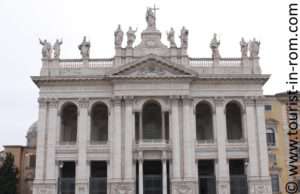
Opposite St. John is the holy staircase on which Jesus is said to have been led to Pontius Pilate. It was said to have been brought to Rome by the mother of Emperor Constantine in year 326.
From San Giovanni it’s a little walk to the nearby Basilica of Santa Croce in Gerusalemme.
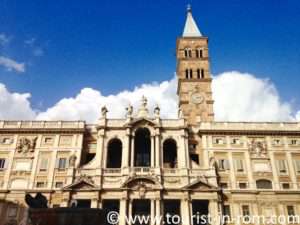
From there you can take the tram line 3 to San Lorenzo outside the city walls.
After St. Lawrene, the pilgrimage leads back to the Basilica of Santa Maria Maggiore. Until San Giovanni you can take the tram number 3 and from there walking or by bus via the Via Merulana.
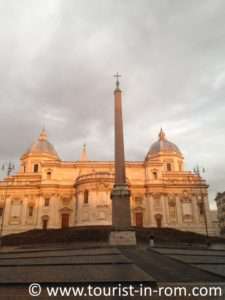
Pope John Paul II has still extended the pilgrimage by establishing the sanctuary of the Madonna del Divino amore (Madonna of divine love) instead of St. Sebastian. This did not prevail, since the pilgrims way would have been extended by around 15 miles.
More about the Vatican
